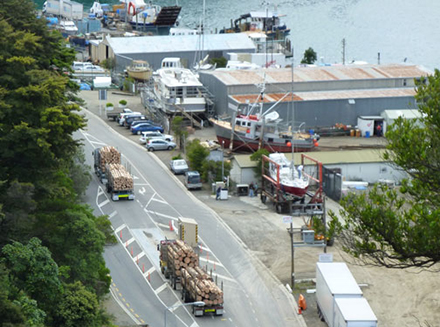
The forestry industry has been reassured that the NZ$1.1 million a year it pays to repair road damage caused by log trucks is not being used to build cycleways in the city. Source: The Gisborne Herald
Speaking at a meeting of Gisborne District Council last week, councillor Graeme Thomson asked if heavy rural road users were getting value for money.
He asked staff to confirm if the money paid by rural-based high-differential road users was used to fund cycleways in the city, or other items not directly related to the damage caused by heavy use.
Tairawhiti Roads general manager Dave Hadfield said the district had a NZ$23.8m roading program, NZ$9.4 million of which came from collected rates.
“The bulk of that money is obviously in the network outcome (maintenance) contracts, and then there is also NZ$14m of Government subsidies.” ‘Residential road users accounted for NZ$3.35m of funds, while forestry users, which paid a differential five times that of residential users, accounted for NZ$1.1m.
Horticulture and pastoral users paid a differential of 1.5 and accounted for NZ$2.65m, while industrial and commercial road users paid twice the residential rate and accounted for NZ$1m.
The remaining NZ$1.4m came from uniform annual general charges.
“Differentials are set according to land use. It’s assumed that forestry trucks would cause more damage,” Mr Hadfield said.
“About two years ago we went through the maintenance over four to five years to see where those funds were distributed.”
Mr Hadfield said for the 11 months to date, 59% of the rates-funded section of the roading budget had been collected from the inner city zone, which included Gisborne city, Wainui and the Poverty Bay Flats.
Of the overall spend, 68% had been spent on roading issues in the rural zone.
Chief executive Judy Campbell said there was “nothing wrong” with the way those funds were spent.
“Cycleways get about $500,000 a year. Most cycleways we have done so far have been paid for through development contributions or financial contributions. So, this question of rural money being spent on the city is actually the other way around.” She said.







